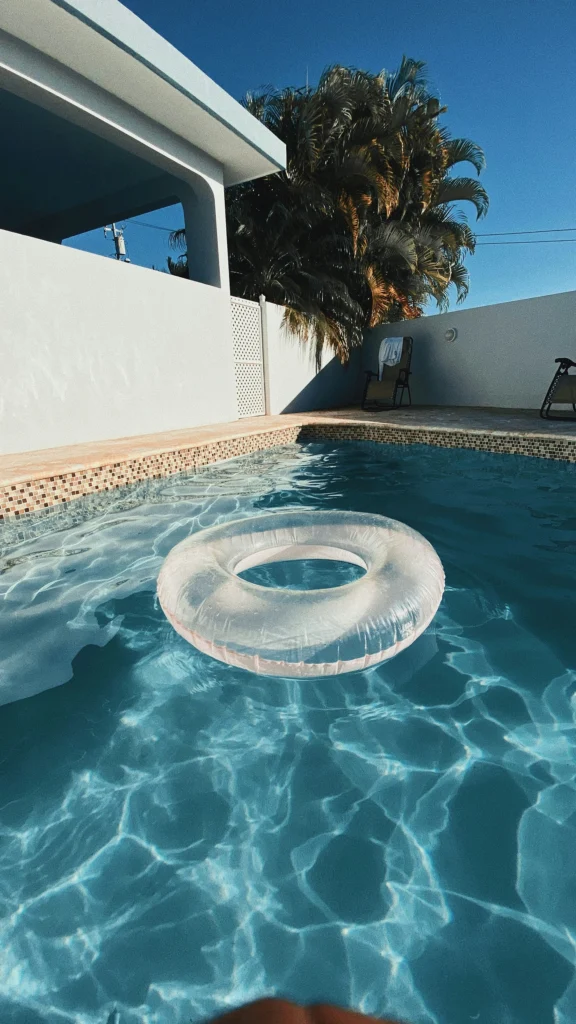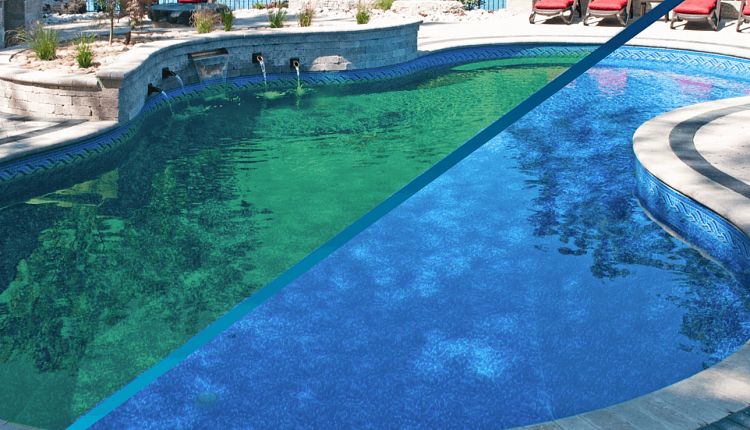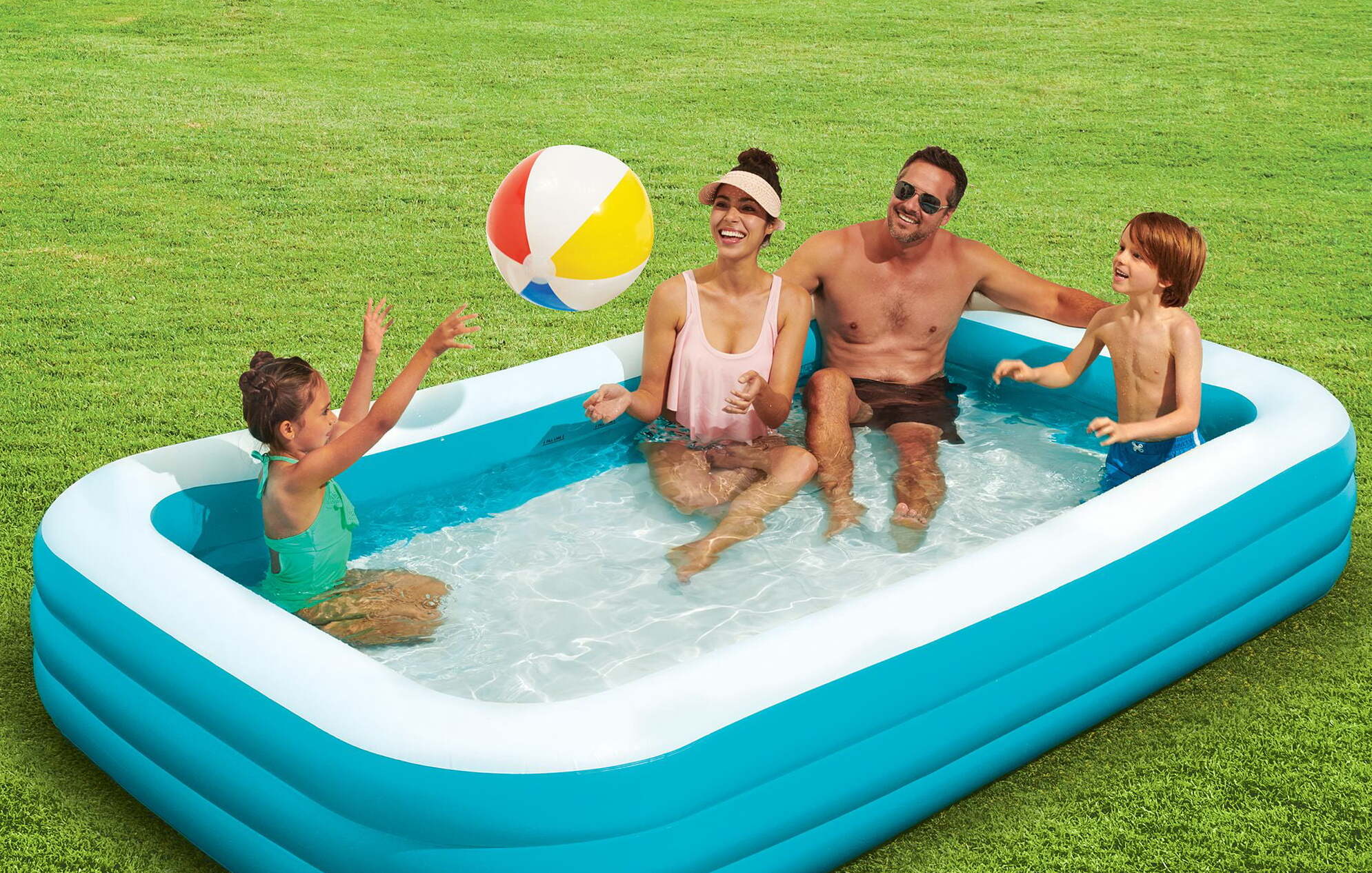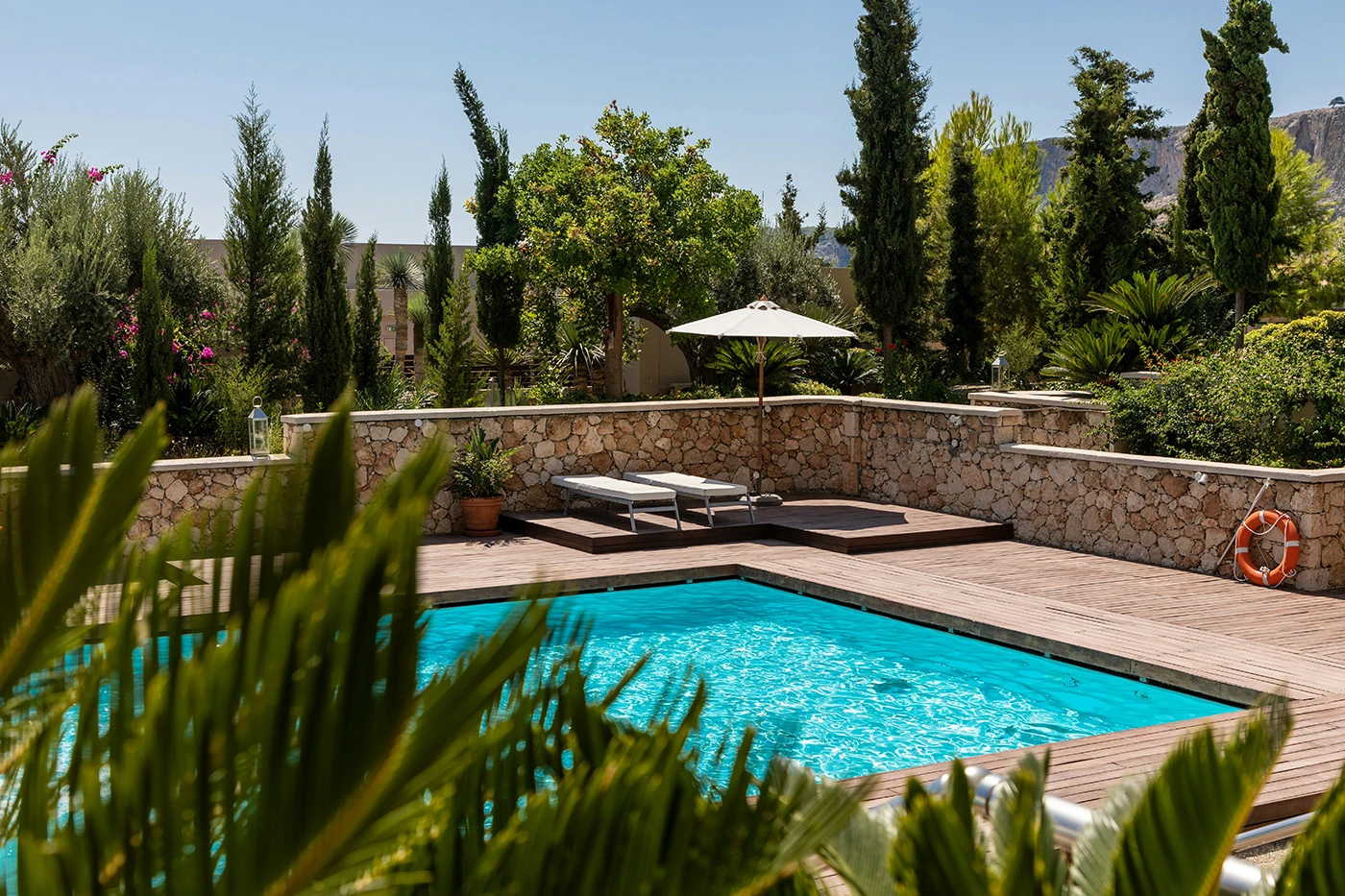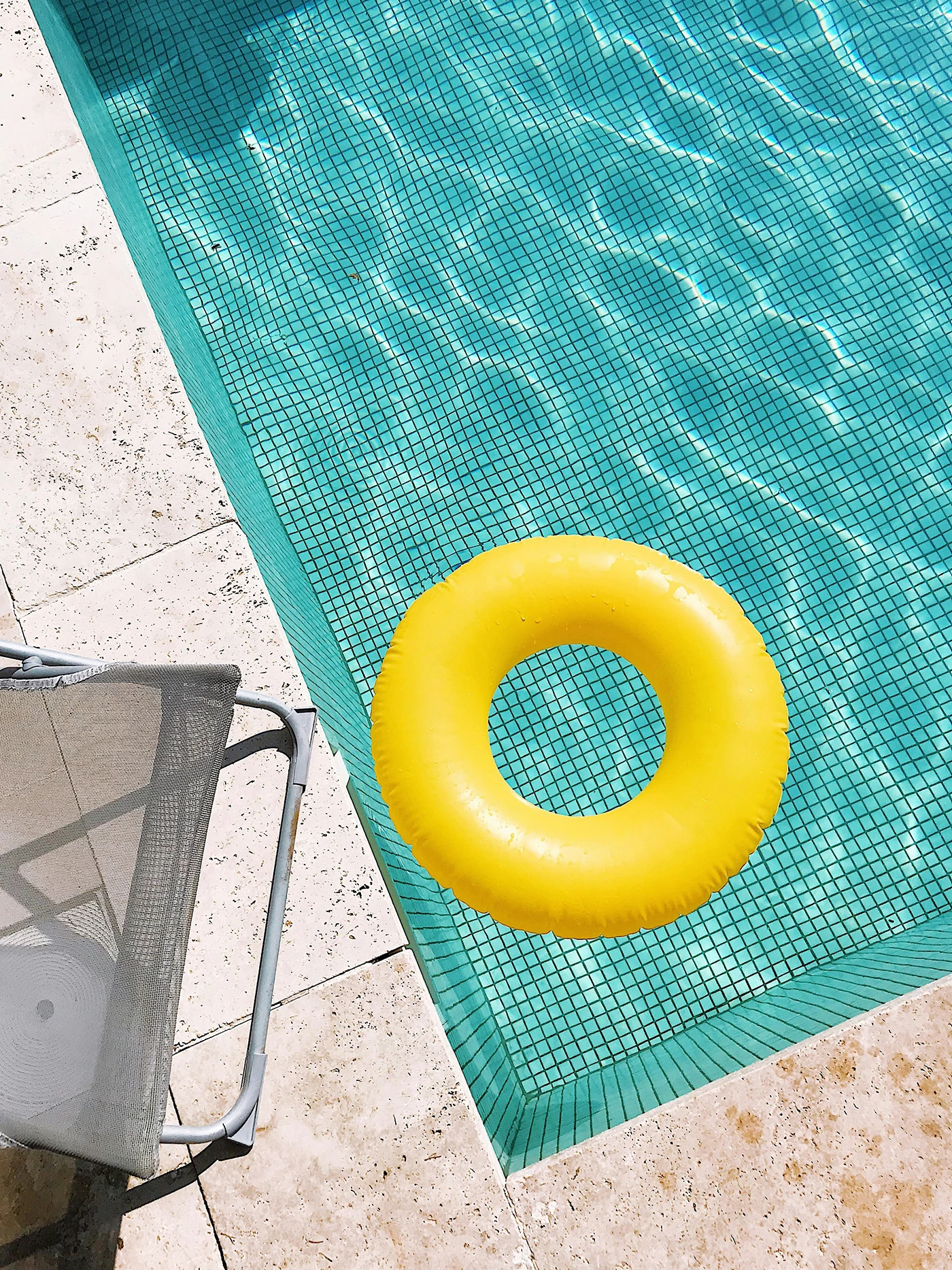Keeping your pool in top condition requires regular attention. Weekly maintenance for pool involves a series of simple tasks that ensure your pool remains clean, safe, and ready for use. In this guide, we’ll cover essential weekly maintenance tasks every pool owner should perform to keep their pool in optimal condition.
Key Takeaways
- Establishing and adhering to a weekly maintenance schedule is crucial for preventing costly repairs and ensuring optimal pool conditions.
- Regularly skimming the pool’s surface and cleaning the skimmer basket are key to maintaining water cleanliness and reducing filter load.
- Testing and balancing water chemistry multiple times a week keeps the pool safe and ensures proper functioning of chemicals, providing a comfortable swimming environment.
Why you should set up a weekly maintenance schedule
Regular maintenance is the key to ensuring your pool remains beautiful and well-functioning. Neglecting routine upkeep can lead to costly repairs and decreased enjoyment of your pool. Pool owners can benefit from using a weekly pool maintenance checklist to stay on top of regular pool care tasks. This can help ensure that all necessary maintenance is performed and nothing gets overlooked. By keeping essential supplies like test kits, chlorine tablets, and other chemicals stocked, you can avoid last-minute trips to the store and keep your pool in optimal condition.
Good pool circulation is vital for maintaining water clarity and safety. Running your filter system daily is crucial for effective pool maintenance, as it prevents the water from becoming cloudy and polluted. Additionally, installing an automatic water leveler can help maintain the proper water level without manual intervention, which is especially handy during hot weather or high swimmer loads when water levels can drop quickly.
Using additional chemicals, such as rust removers, scale removers, and water clarifiers, according to the manufacturer’s guidelines, can also help maintain water quality. A dedicated weekly checklist ensures these tasks are performed consistently, keeping your pool safe and enjoyable for everyone.
Skim the Surface Regularly
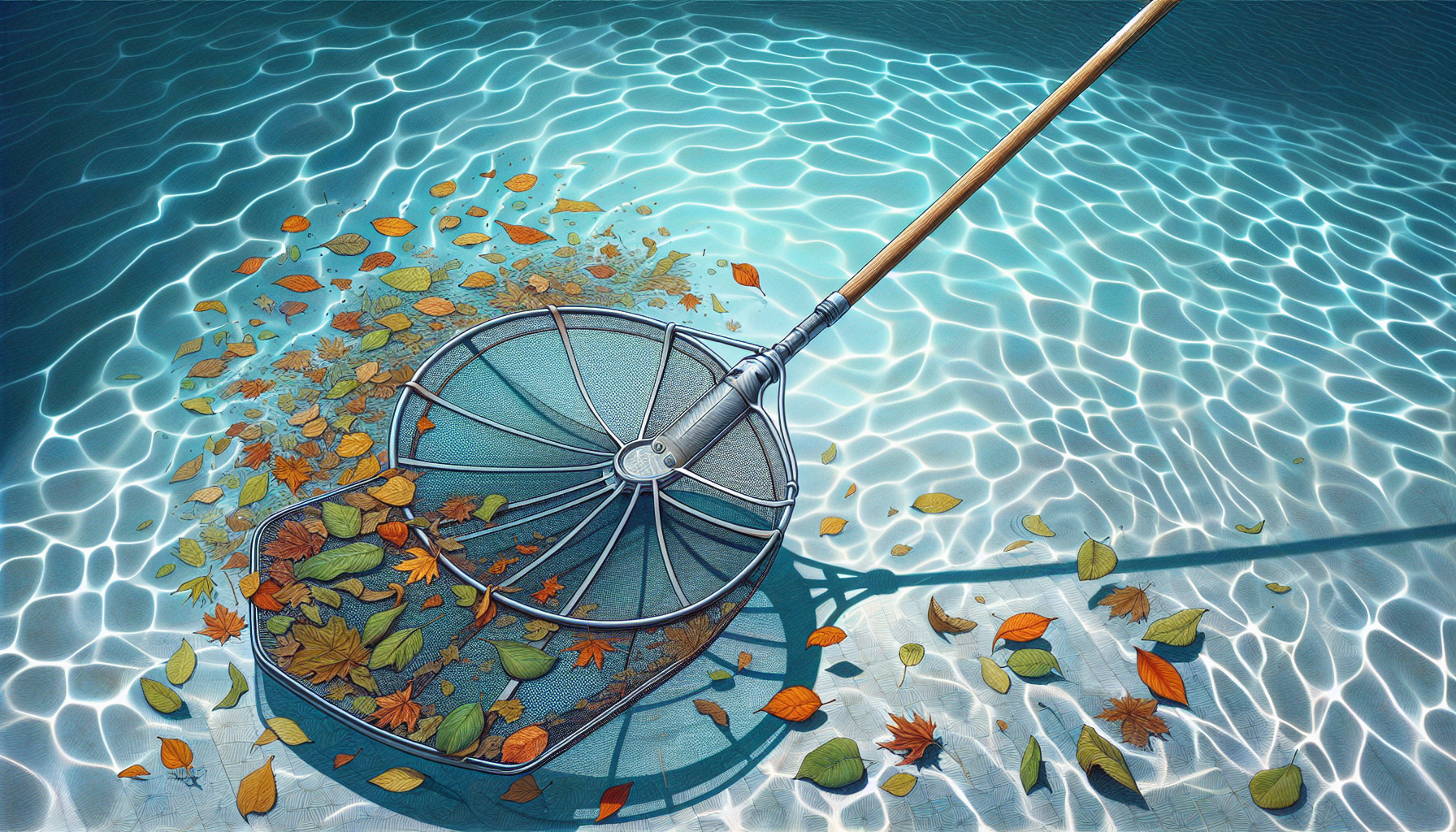
Regularly skimming the surface of the pool to remove floating debris like leaves and bugs prevents them from sinking to the bottom. Using a pool skimmer is an essential part of your weekly pool maintenance routine to ensure a cleaner pool. Focus on skimming areas where debris tends to accumulate, such as corners and near skimmer and return jets.
Skimming the pool’s surface with a net helps remove debris and contaminants like leaves and insects. This not only keeps the pool water clean but also reduces the load on your pool filter, making it more efficient. For optimal results, perform this task multiple times a week to keep your pool inviting.
Clean the Skimmer Basket
Emptying and cleaning the skimmer basket ensures that it effectively removes debris from the pool. By regularly emptying skimmer baskets and pump baskets, you can prevent blockages and maintain proper water flow. This is a simple yet crucial step in your weekly pool maintenance routine.
To clean the skimmer basket, pull it out and remove leaves and debris. Use a garden hose to thoroughly rinse out the basket, removing any trapped dirt or leaves. This helps prevent clogging in the pool’s circulation system, ensuring that your pool pump operates efficiently.
Brush Pool Walls and Tile Line
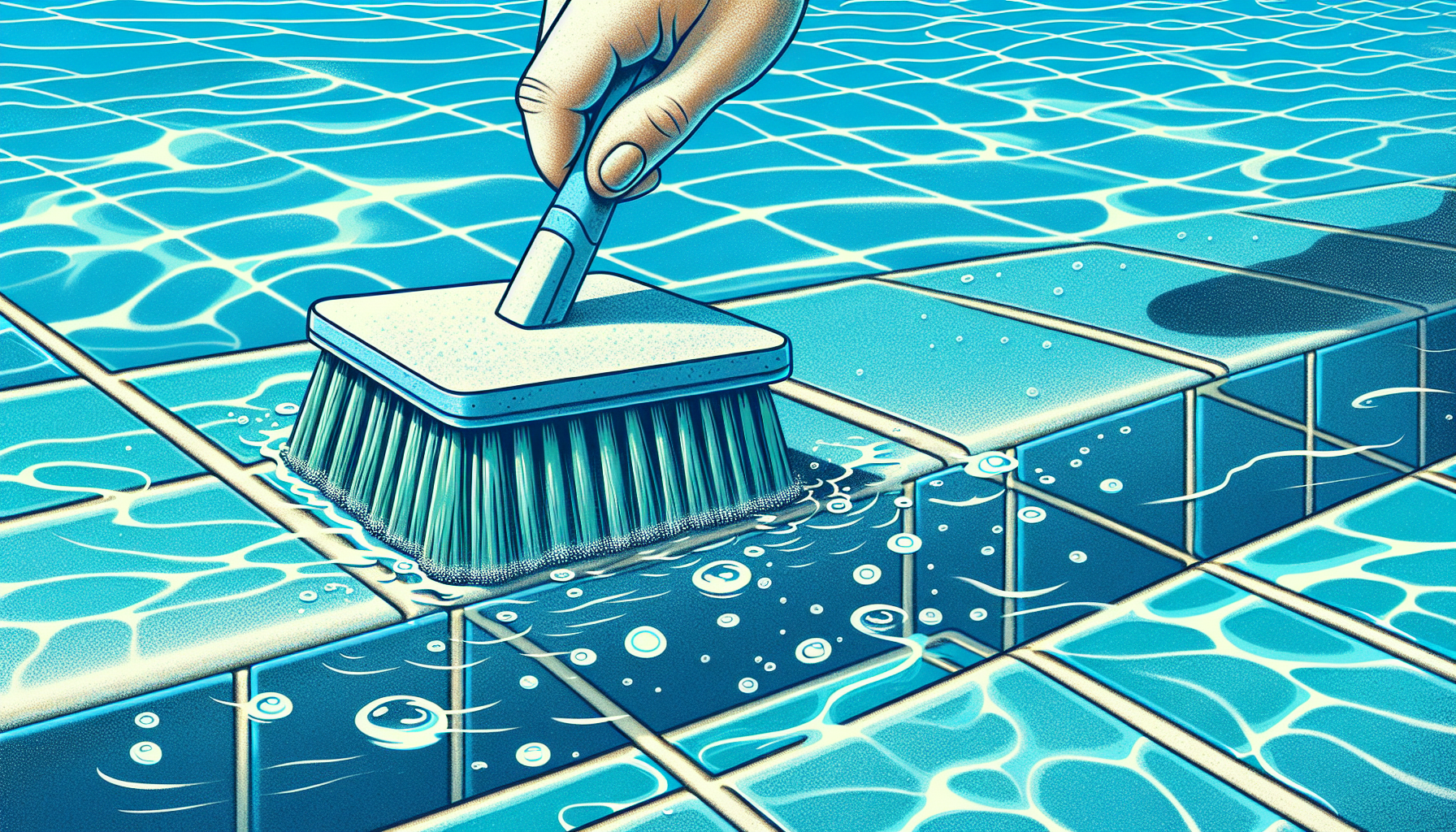
Brushing pool walls and tile lines is a crucial task to keep your pool clean and prevent algae growth and sediment buildup. By routinely brushing the pool walls, you can prevent algae and calcium deposit buildup, which not only affects water quality but also the appearance of your pool.
To clean the pool walls and steps effectively, use a scrubber to remove any sediment buildup. This will help ensure a clean and well-maintained pool. Regular scrubbing of pool tiles helps maintain their vibrant color and luster, preventing degradation over time. This is an essential part of your pool maintenance checklist to ensure a sparkling clean pool.
Vacuum the Pool Floor
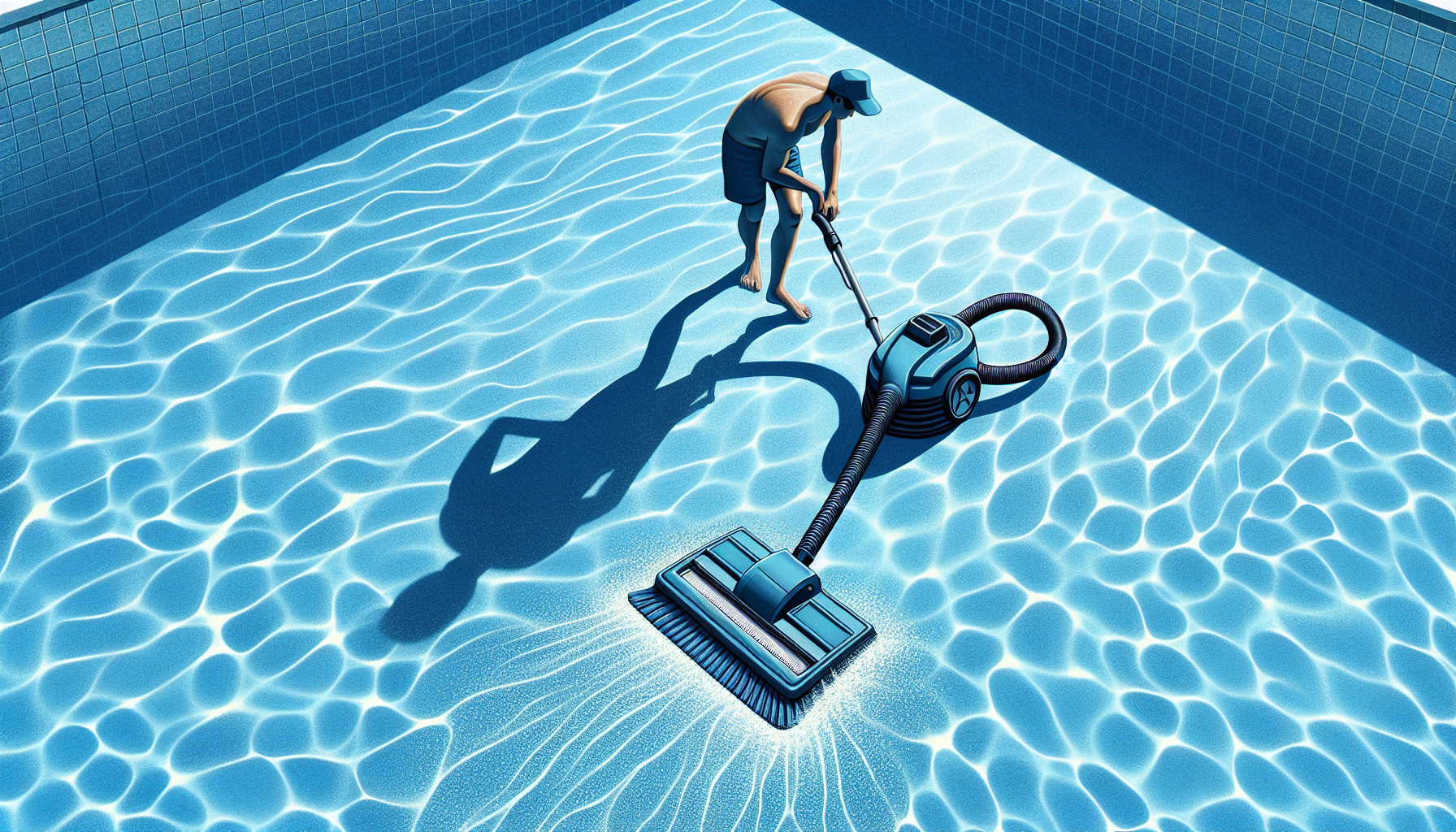
Vacuuming the pool removes dirt and debris that have settled at the bottom, ensuring a clean and safe swimming environment. Pool vacuums are generally categorized into two main types: automatic and manual. Each type offers its own unique set of benefits and features. Automatic pool vacuums can be programmed to clean on a set schedule, offering convenience and efficiency, though they are more expensive and require regular maintenance and occasional repairs.
Manual pool vacuums are cost-effective and versatile, allowing for targeted cleaning of specific areas. However, they require physical effort and can be time-consuming to operate, especially for larger pools. Choose the type that best fits your needs, such as an automatic pool cleaner, and integrate the use of a manual pool vacuum into your weekly pool maintenance routine.
Check and Adjust Water Levels
Maintaining the water level to the optimal mark on the tile line or skimmer line is crucial for efficient skimmer operation and preventing damage to the pool pump. The recommended water level for the pool should be at the halfway mark of the skimmer plate, covering about one-third to one-half of the pool skimmer’s opening.
Verifying that the water flow rate is consistent and adequate is also essential. By regularly checking and adjusting water levels, you ensure that water circulates properly, which helps maintain water quality and prevents cloudy water.
Test and Balance Water Chemistry
Testing pool water chemistry can be done using test strips, testing kits, or digital testers, each with their own pros and cons. Test strips are often recommended for beginners due to their simplicity and cost-effectiveness. It’s recommended to test pool water at least two or three times per week to ensure safety and clarity.
Every week, using a test kit is a good practice for maintaining healthy pool water. Testing the water for pH balance, alkalinity, and calcium hardness is essential for maintaining a healthy pool chemistry. Chlorine levels should be kept between 1 and 3 parts per million (ppm) to ensure water sanitation.
The ideal pH level for a chlorine pool is typically maintained between 7.2 and 7.8 to ensure proper sanitation and comfort for swimmers. Maintaining this range helps optimize the effectiveness of the chlorine and prevents irritation to swimmers’ skin and eyes. The recommended alkalinity levels for a pool are between 80 and 150 ppm, and calcium hardness levels should be between 175 and 275 ppm. Additional pool chemicals like rust and scale removers, and water clarifiers might need to be added weekly. Keeping these chemical levels balanced ensures that water quality remains high.
Shock the Pool
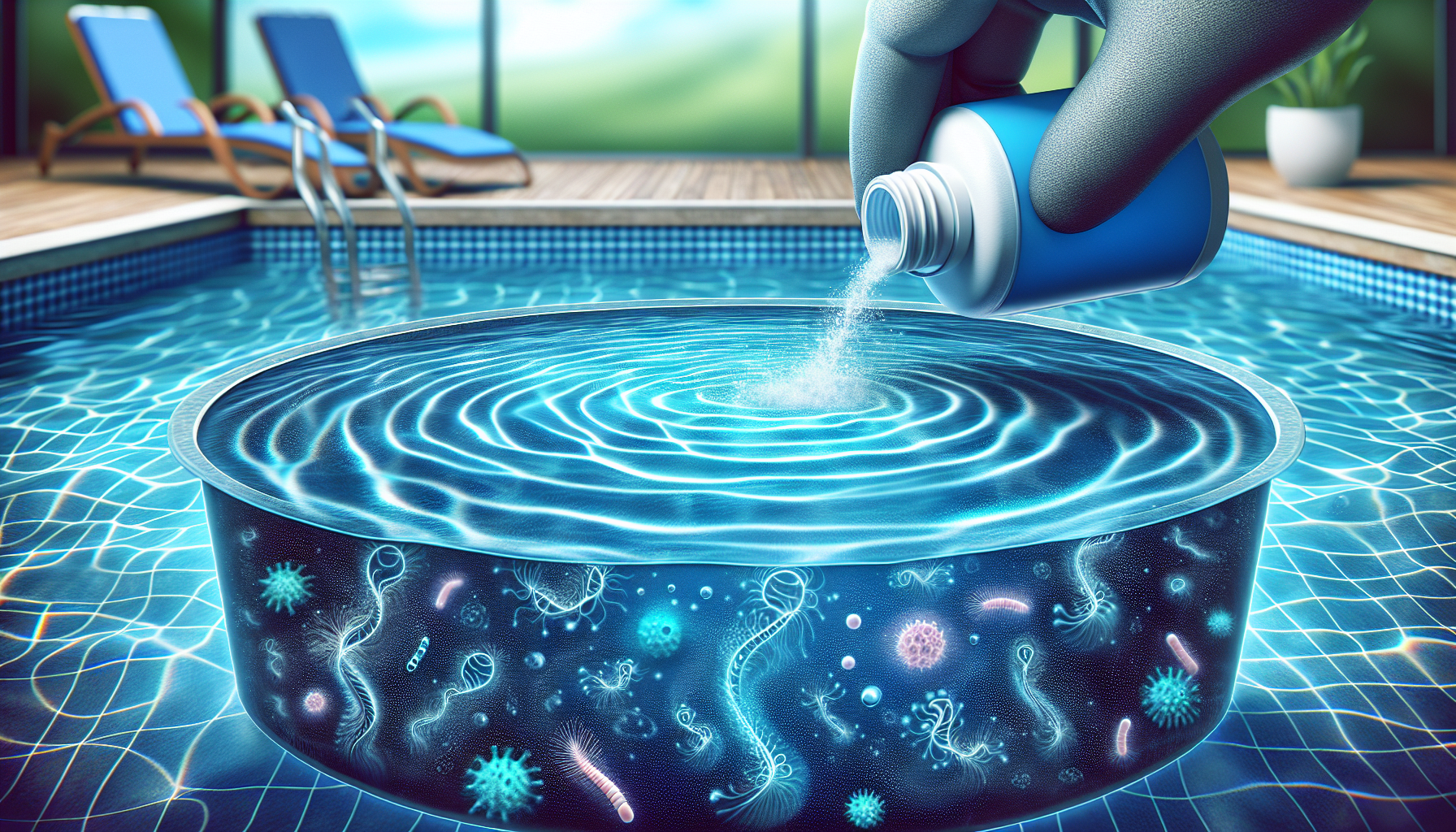
Shocking the pool with a high dose of chemicals destroys bacteria and should be done at least once a month or more frequently after heavy use or rainfall. Shocking a pool should be done every other week for moderate use, or weekly for heavy use.
Before shocking the pool, ensure the water is balanced, and remove dirt and debris by brushing and vacuuming the pool. There are three basic types of pool shock: Calcium Hypochlorite, Dichloroisocyanuric Acid, and Potassium Peroxymonosulfate. The amount of shock needed generally follows a guideline of one to two pounds per 10,000 gallons of water.
Add Algaecide
Applying an algaecide helps prevent algae growth and should be done weekly or bi-weekly, especially after shocking the pool. Algaecide should also be added when closing the pool for the year to prevent algae growth during dark, humid conditions.
Copper-based algaecides are the most common but can cause staining in pools with a pH over 7. Polyquat algaecides are safer alternatives that inhibit algae growth without staining. Algaecide works best when added to various spots around the pool with the pump running to ensure even distribution.
Inspect and Clean the Filter System
Checking and backwashing the filter is necessary to keep it functioning properly. Backwash the filter when the gauge reads 8-10 psi higher than normal to prevent blockage and maintain efficiency. Depending on your pool setup, you might have a cartridge, sand, or diatomaceous earth filter, each requiring different cleaning methods.
Use a garden hose to rinse the cartridge in the filter for thorough cleaning. Backwashing your filter involves reversing the water flow to remove contaminants, which is commonly done for sand and diatomaceous earth filters.
To properly clean and maintain your filter, follow these steps:
- Clean the filter weekly to remove any gathered debris and ensure the system runs efficiently.
- Inspect filters to ensure they are not clogged or damaged, as this can impede function.
- Following the manufacturer’s directions for cleaning and maintaining the filter extends its lifespan and ensures optimal performance.
Clean the Pool Deck and Surrounding Area

Scrubbing and cleaning the pool deck prevents debris from being tracked into the pool and contributes to overall pool maintenance. Cleaning pool tiles reduces the risk of slips and falls by preventing algae and biofilm growth.
To clean your pool deck, follow these steps:
- Use a stiff-bristled outdoor broom to sweep off dirt and debris from the pool deck.
- Rinse the pool deck with a garden hose to remove loose dirt and leaves.
- Use a mixture of one cup of white vinegar and a gallon of water to remove mold and mildew from the pool deck.
Double-Check Pool Equipment
Check pumps for any signs of leakage or unusual noise. Tighten loose bolts and connections on pool equipment. Ensure safety equipment, like pool covers and ladders, are secure and in good condition.
Double-checking your swimming pool equipment should be a regular part of your weekly pool maintenance checklist. This ensures that all the components are working properly and helps prevent any unexpected breakdowns.
Monitor Salt Levels (For Saltwater Pools)
Salt levels in salt water pools should be measured in parts per million (ppm) and regularly tested with salt test strips for accuracy. The recommended salt levels for a saltwater pool are between 2,700-3,400 ppm. It is important to maintain the appropriate salt concentration to ensure the pool functions properly and remains comfortable for swimmers.
Regularly test the salt levels with salt test strips to ensure accuracy. Salt levels typically need an annual booster addition to replace salt lost due to backwashing, splash-out, or lowering water for winterization.
Consider hiring a professional pool service to clean regularly
Hiring a professional pool service can provide several benefits, including:
- Saving time
- Ensuring your pool is maintained at the highest standards
- Access to expertise and equipment that may not be available to the average pool owner.
To offset the costs, consider renting out your pool through platforms like Swimply, which allows you to earn money by sharing your pool with others. This can help cover the expenses of hiring a professional service while also providing a fun experience for guests.
Summary
Maintaining a pool can seem daunting, but with a structured weekly pool maintenance routine, it becomes manageable and even enjoyable. By following the tips outlined in this guide, you can ensure that your pool stays clean, safe, and ready for swimming all season long.
Remember, a little effort each week goes a long way in preserving the beauty and functionality of your pool. Happy swimming!
Frequently Asked Questions
How often should I test my pool water?
You should test your pool water at least two or three times per week to ensure safety and clarity. Regular testing helps maintain optimal water conditions for swimming.
What should the pH level of my pool be?
The pH level of your pool should be maintained between 7.2 and 7.8 for optimal chlorine pool conditions.
How often should I shock my pool?
You should shock your pool every other week for moderate use, or weekly for heavy use. Regular maintenance is key to keeping your pool clean and safe.
What is the best way to prevent algae growth in my pool?
To prevent algae growth in your pool, apply an algaecide weekly or bi-weekly and maintain proper chemical levels. This will help keep your pool water clear and free from algae.
Why is it important to maintain proper water levels in my pool?
It is important to maintain proper water levels in your pool to ensure efficient skimmer operation and prevent damage to the pool pump. This helps in keeping the pool in good working condition and prevents potential damage.
